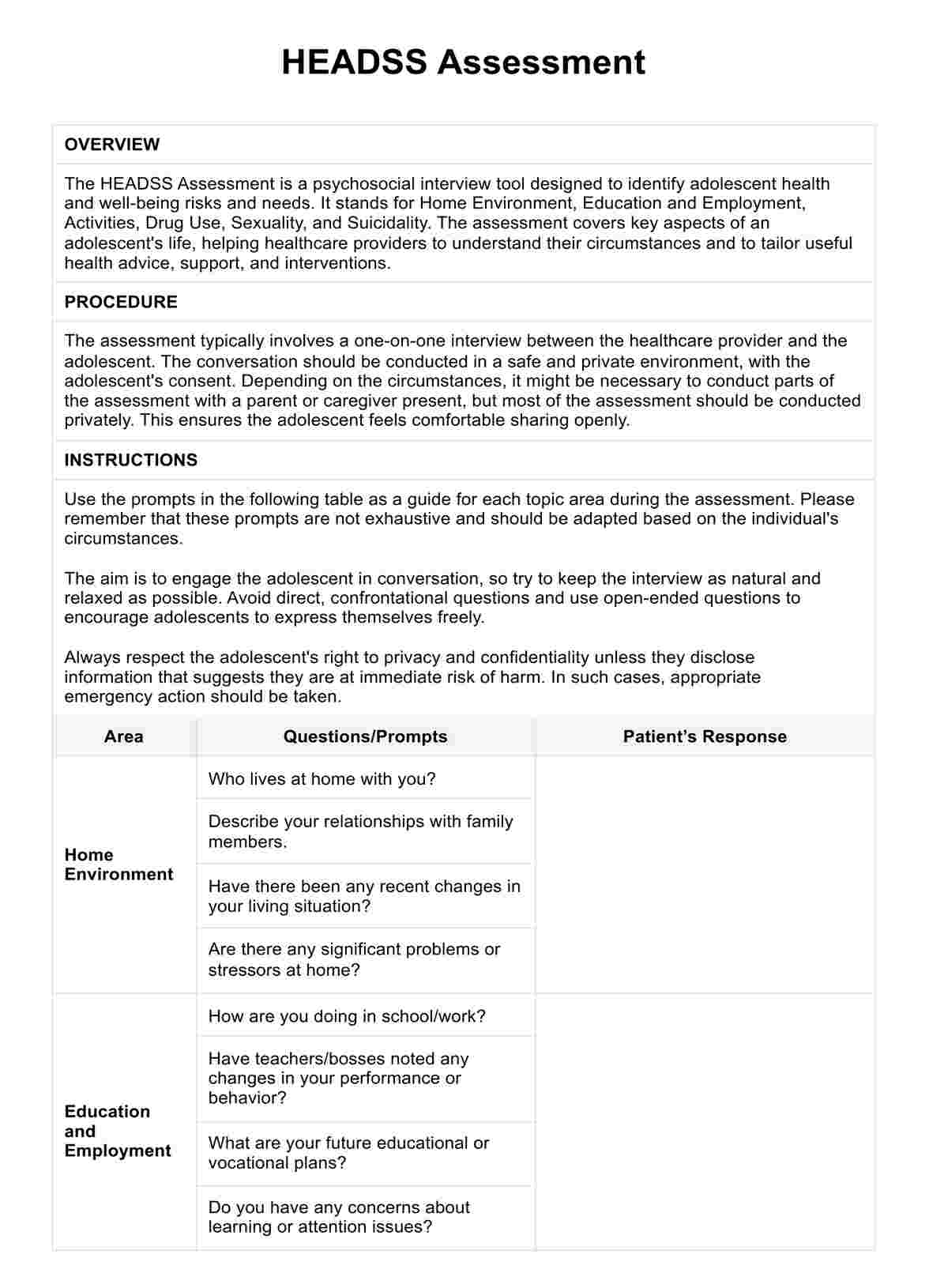HEADSS assessments are used by healthcare professionals, especially those working in pediatric and adolescent health.

HEADSS assessments
Enhance adolescent health care using the HEADSS assessment. Understand its purpose, execution, and benefits. Download your free PDF now!
Use Template
HEADSS assessments Template
Commonly asked questions
The HEADSS assessment is typically used during routine health checks with adolescents or when there is a concern about the adolescent's health or well-being.
The HEADSS assessment is conducted as a conversation between the healthcare provider and the adolescent. The healthcare provider asks questions about each HEADSS area, records the responses, and uses this information to identify health risks and plan appropriate interventions.
EHR and practice management software
Get started for free
*No credit card required
Free
$0/usd
Unlimited clients
Telehealth
1GB of storage
Client portal text
Automated billing and online payments











